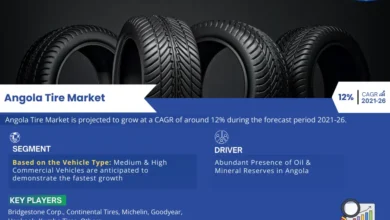Tilapia Price Trend: An In-Depth Analysis by Procurement Resource
As a versatile and popular fish, tilapia has become a staple in many households and restaurants around the world. Monitoring the tilapia price trend is essential for industry stakeholders, from farmers and distributors to retailers and consumers. This press release provides a comprehensive analysis of the current and historical tilapia prices, helping businesses make informed decisions based on accurate and detailed data.
Request Free Sample – https://www.procurementresource.com/resource-center/tilapia-price-trends/pricerequest
Understanding Tilapia Price Trend
The tilapia price trend refers to the movement of tilapia prices over a specified period, influenced by various factors such as supply and demand dynamics, production costs, and market conditions. Analyzing these trends helps businesses anticipate price fluctuations and plan their procurement strategies accordingly.
Current Trends in Tilapia Prices
In recent years, the tilapia price trend has shown variability due to several influencing factors. Seasonal fluctuations, changes in production costs, and variations in global demand all contribute to the observed price changes. Additionally, geopolitical events and environmental factors can significantly impact the supply chain, further affecting prices.
Key Factors Influencing Tilapia Prices
- Supply and Demand: The balance between the supply of tilapia and consumer demand plays a crucial role in determining prices. During peak demand periods, such as holidays or festive seasons, prices may rise due to increased consumption.
- Production Costs: Factors such as feed prices, labor costs, and energy expenses directly impact the cost of producing tilapia. Any changes in these input costs can lead to corresponding adjustments in tilapia prices.
- Environmental Factors: Climate conditions, water quality, and disease outbreaks can affect tilapia farming, influencing the availability and quality of the fish. These factors can cause price fluctuations based on the level of impact on production.
Detailed Tilapia Price Analysis
A thorough tilapia price analysis involves examining historical data, market conditions, and predictive modeling to understand the current and future pricing landscape. This analysis helps stakeholders make strategic decisions regarding procurement, pricing, and inventory management.
Historical Price Data
Analyzing historical price data provides insights into how tilapia prices have evolved over time. This data can reveal patterns and trends, helping businesses anticipate future price movements. For instance, historical data might show that tilapia prices typically increase during certain months due to seasonal demand spikes.
Market Conditions
Current market conditions, such as changes in consumer preferences, trade policies, and economic factors, are crucial in understanding tilapia price trends. For example, shifts in dietary trends towards healthier eating can increase demand for tilapia, influencing prices.
Predictive Modeling
Predictive modeling uses historical data and market indicators to forecast future price trends. By analyzing various scenarios, businesses can prepare for potential price fluctuations and adjust their strategies accordingly.
Comprehensive Tilapia Price Chart
A tilapia price chart visually represents the historical and current prices of tilapia over a specific period. This chart helps stakeholders quickly grasp the price trends and identify any significant fluctuations.
Creating the Price Chart
To create a comprehensive tilapia price chart, data from various sources such as market reports, trade publications, and government statistics are compiled. The chart typically includes data points such as:
- Monthly Average Prices: Displaying the average prices of tilapia each month helps identify seasonal trends and recurring patterns.
- Yearly Comparison: Comparing yearly prices provides a broader perspective on long-term trends and highlights any significant changes over the years.
- Regional Variations: Including prices from different regions helps identify geographical factors influencing the tilapia price trend.
Interpreting the Price Chart
Interpreting the tilapia price chart involves analyzing the data to identify trends, peaks, and troughs. This analysis can reveal patterns such as regular price increases during specific months or years with significant price volatility.
Latest Tilapia Price News
Staying updated with the latest tilapia price news is essential for businesses involved in the tilapia market. This section highlights recent developments and news that have impacted tilapia prices.
Recent Market Developments
- Supply Chain Disruptions: Reports of disruptions in the supply chain, such as transportation issues or labor shortages, can cause price fluctuations. For example, a strike in a major tilapia-producing region might lead to reduced supply and higher prices.
- Regulatory Changes: Updates on regulatory changes affecting tilapia farming and trade, such as new import/export tariffs or environmental regulations, can influence prices.
- Technological Advancements: Innovations in tilapia farming technology, such as improved feed efficiency or disease control measures, can impact production costs and prices.
Impact on Prices
Analyzing how these recent developments affect prices helps businesses stay ahead of market changes. For instance, a significant technological advancement that reduces production costs could lead to lower tilapia prices in the market.
Understanding Tilapia Price Index
The tilapia price index is a measure that tracks the overall movement of tilapia prices over time, providing a benchmark for evaluating price trends and market conditions.
Calculating the Price Index
The tilapia price index is calculated by taking a weighted average of prices from different sources and regions, adjusted for inflation and other economic factors. This index provides a standardized measure of price changes over time.
Using the Price Index
Businesses use the tilapia price index to:
- Compare Prices: Evaluate how current prices compare to historical averages and identify any significant deviations.
- Forecast Trends: Use the index to predict future price movements based on past trends and market conditions.
- Benchmark Performance: Compare their own pricing strategies and performance against the industry standard.
Visualizing Trends with Tilapia Price Graph
A tilapia price graph provides a visual representation of price movements, making it easier to understand and analyze trends over time.
Creating the Price Graph
The tilapia price graph is created using data from various sources, plotted over a specific period. This graph typically includes:
- Price Movements: Displaying the changes in tilapia prices over time.
- Trend Lines: Adding trend lines to highlight long-term price movements and identify patterns.
- Annotations: Including annotations for significant events or market changes that influenced prices.
Interpreting the Price Graph
Interpreting the tilapia price graph involves:
- Identifying Trends: Recognizing upward or downward trends in prices.
- Spotting Volatility: Noting periods of high volatility and understanding the factors driving these changes.
- Making Predictions: Using historical patterns to forecast future price movements and make informed business decisions.
Looking for an Exhaustive and Personalized Report?
Procurement Resource offers exhaustive and personalized reports tailored to meet the specific needs of businesses in the tilapia market. Our comprehensive reports provide detailed insights into the tilapia price trend, cost breakdowns, market dynamics, and key trends. Whether you are a farmer, distributor, retailer, or investor, our reports are designed to support your strategic decisions and operational optimization.
Our personalized approach ensures that the reports are customized to address your unique business challenges and opportunities. By leveraging our extensive industry knowledge and data, we provide actionable insights that help you stay ahead of the competition and drive growth.
Conclusion
Understanding the tilapia price trend is essential for businesses operating in this market. Procurement Resource’s detailed analysis offers invaluable insights into price movements, helping businesses navigate the complexities of the tilapia market and optimize their operations. By understanding the factors influencing prices, analyzing historical data, and staying updated with the latest news, stakeholders can make informed decisions that enhance efficiency and profitability.
For an in-depth and personalized assessment of the tilapia price trend, tailored to your business needs, reach out to Procurement Resource. Our expertise and comprehensive analysis provide the foundation for informed decision-making and strategic planning in the tilapia industry.
About Us:
Procurement Resource is an invaluable partner for businesses seeking comprehensive market research and strategic insights across a spectrum of industries. With a repository of over 500 chemicals, commodities, and utilities, updated regularly, they offer a cost-effective solution for diverse procurement needs. Their team of seasoned analysts conducts thorough research, delivering clients with up-to-date market reports, cost models, price analysis, and category insights.
By tracking prices and production costs across various goods and commodities, Procurement Resource ensures clients receive the latest and most reliable data. Collaborating with procurement teams across industries, they provide real-time facts and pioneering practices to streamline procurement processes and enable informed decision-making. Procurement Resource empowers clients to navigate complex supply chains, understand industry trends, and develop strategies for sustainable growth.
Contact Us:
Company Name: Procurement Resource
Contact Person: Amanda Williams
Email: sales@procurementresource.com
Toll-Free Number: USA Canada – Phone no: +1 307 363 1045 | UK – Phone no: +44 7537 132103 | Asia-Pacific (APAC) – Phone no: +91 1203185500
Address: 30 North Gould Street, Sheridan, WY 82801, USA




